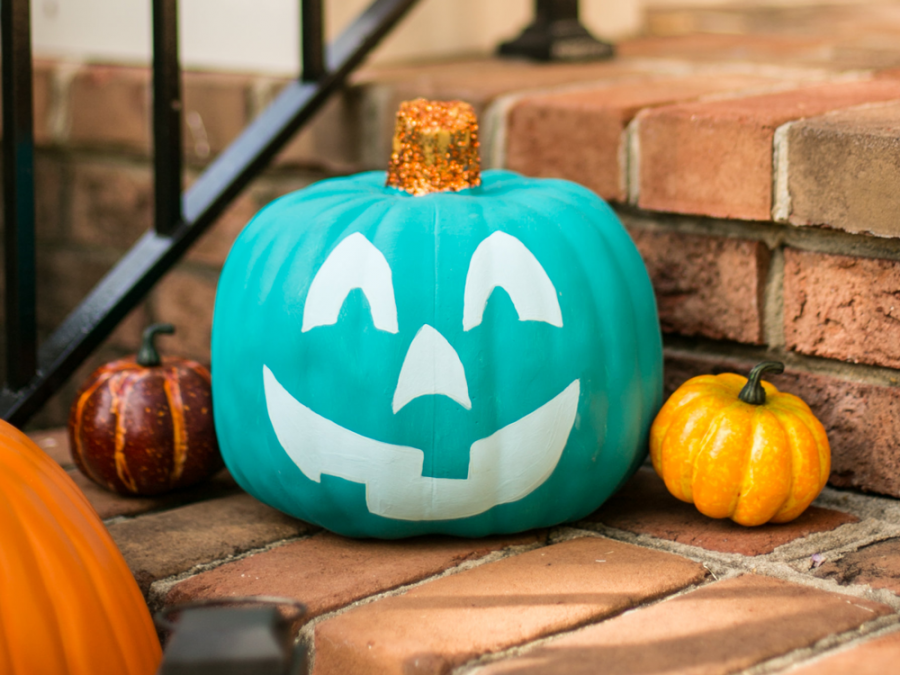An Out of the Blue Halloween
Teal pumpkins are used to welcome children with food allergies to trick-or-treat.
October 29, 2019
On October 31, houses across the nation open their doors to a chorus of “Trick or Treat!”s. Children of all ages, dressed in a variety of costumes, eagerly hold out their buckets or bags, waiting for candy. While most of these buckets will be a typical orange jack-o’-lantern, a few will be blue and teal.
Bright blue pumpkins are a way for parents to indicate that their child is autistic, according to CBS News. Individuals handing out candy on Halloween should keep an eye out for these uncommonly colored buckets in order to be aware of trick-or-treaters who may be non-verbal or struggle to communicate. Although this idea is a wonderful way to increase awareness, it has only recently been introduced by parents who took to social media to explain the meaning behind their children’s blue buckets. The movement has been widely shared and been approved by the organization Autism Speaks, who encouraged children with autism to use blue buckets.
One mother posted on Facebook for her twenty-one year old son with autism, who continues to enjoy the holiday through trick-or-treating, according to CBS News. She urges, “Please help us keep his spirit alive & happy. So when you see the blue bucket share a piece of candy. Spread awareness!”
Teal pumpkins may also be sighted this Halloween and are part of the Teal Pumpkin project, which was initiated by the Food Allergy Community of East Tennessee (FACET) in 2013, according to NPR. Whereas blue pumpkins were a signal to houses passing out candy, teal pumpkins are a signal to trick-or-treaters that the house offers food-allergy friendly treats. Houses with teal pumpkins on their doorsteps, which is the color of food allergy awareness, hand out candy in addition to non-food items such as glow sticks, stickers, or Dracula teeth, according to NPR.
The project began six years ago and has since grown in support, with over 33,000 homes displaying teal pumpkins to their trick-or-treaters. Few are aware of the reality for children with food allergies on Halloween, who must discard or thoroughly filter their candy after the night is over. According to the Food Allergy Research and Education, one in thirteen children have food allergies. Teal pumpkins are a way for children to enjoy Halloween without being excluded from trick-or-treating, and a way for parents to be less worried about their children having allergic reactions.
After learning about the meaning behind these different-colored pumpkins, Juliana Kim (12) comments, “This is amazing, and I’m so glad these projects exist to raise awareness so that everyone can enjoy Halloween. I will definitely keep a look-out for blue and teal pumpkins this year.”
Happy Halloween, Mustangs!






































